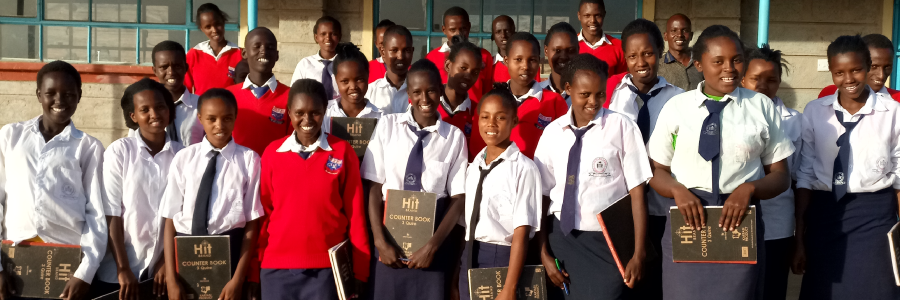

Wezesha Vijana (Adolescent Girls’ Advancement) Program
Program Impact
Monitoring, evaluation and learning (MEL) is the foundation of our program implementation strategy. To prepare us for long-term sustainability, we seek information to clarify our understanding, refine our approaches and improve our decisions. We strive to collect data as close to the schools as possible through user-friendly methods.
We invest in monitoring our programs, focusing on quality and effectiveness. To date, we have invested in easy-to-use technology, community training and local skill-building of our staff and alumni. Data helps us communicate impact to our stakeholders with transparency and accountability while contributing to the international body of knowledge influencing best practices.

CUMULATIVE LIVES IMPACTED and growing...
2019 PROGRAM MAP
Education and life skills are of the utmost importance for the growing youth population on the African continent. Youth must be adequately prepared to succeed in career and life opportunities. Asante Africa Foundation invests in youth in Kenya, Tanzania, Rwanda and Uganda to support their education and personal development.2019 Impact


11,821
2019 Lives Impacted
(Direct + Indirect)
2,239
Girls Directly Engaged
239
Parents Engaged
47
New Schools Added (2019)
505
Boys Directly Engaged
51
New Teachers Engaged (2019)
PROGRAM IMPACT
In addition to outputs of the program we do sample poll assessments of the knowledge acquisition and outcomes of our programs. Data collection helps us analyze our successes and continue to build robust programs, be transparent with our stakeholders, and contribute to the international body of knowledge.
PERFORMANCE & SECONDARY SCHOOL TRANSITION
We observe improvements in school attendance and performance, as well as reduction of early pregnancy rates. This contributes to high transition rates to secondary school.
In the outcomes we see the girls improving their attendance and performance in the classroom. We use primary (Attendance, Pregnancy) and secondary (Academics, Transition) indicators to gauge this impact. Pregnancy data is provided at a school level for all 24 schools. Granular polling at student /class level was done for subset of schools for academics, attendance and transition.
KNOWLEDGE ACQUISITION
Girls and boys have shown improvement in the understanding of health, financial, and social assets after completing the Girls’ Advancement Program.
We do baseline and end line surveys to assess knowledge acquisition of girls and boys during the programs. Data in this dashboard is from survey responses of 200+ girls and boys, during the Project cycle in Kenya.
* Because we believe in transparency, we are starting to share our data in real time. However, some numbers may not be up to date because of our collection schedule and the rural location of some schools. Data is collected monthly, quarterly, or once a year.






